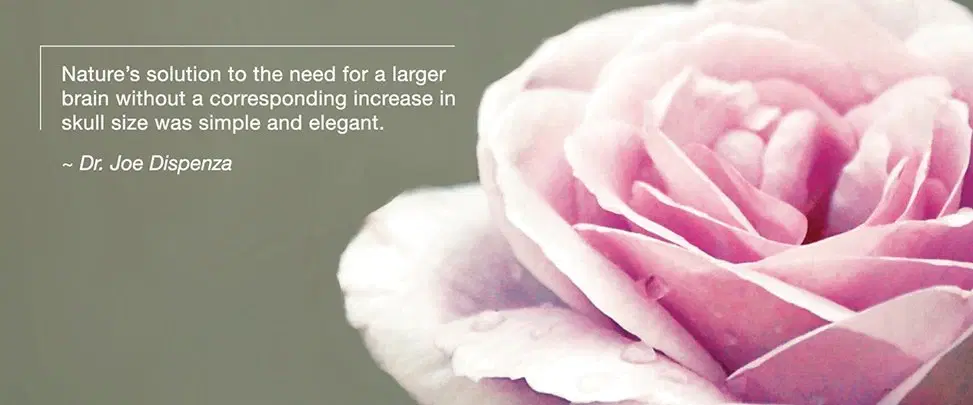The Greatest Unsolved Mystery—Evolution
Dr Joe Dispenza | 24 June 2016
Human evolution is perhaps one of the most fascinating unsolved mysteries there is. While it’s a scientific fact that we did not evolve from Neanderthal but coexisted with them, something seismic and unexplainable occurred in our evolution somewhere between 250,000 – 300,000 years ago.
As animals and species evolved, their brain mass enlarged at the same ratio as their lungs, liver, stomach, and the rest of their physical structure. Most mammals reached the height of their evolution in brain complexity and mass around 250,000 years ago. Early humans should have developed and plateaued at the same rate as other animals during the period, yet something extraordinary happened; the human neocortex, the part of the brain responsible for higher functioning such as sensory perception, motor skills, learning, reasoning, awareness, creativity, and conscious thought, underwent an enormous leap in overall mass and complexity within a short amount of time.
This sudden acceleration in the volume and density of brain mass appears to have occurred spontaneously and unexplainably, as opposed to the normal, linear course of evolution. What caused this explosive brain development, which gave us a neocortex so much larger and denser than that of any other species? Why did the brain expand to such a great degree, while the size of the head, both generally and in relation to the growth of the rest of the body, not keep pace?
The overall volume of the human skull did enlarge to some degree but not proportionally, the way animal evolution would predict. Scientists believe that if the human head had grown at the same rate of increase as the brain, the female pelvis could not have accommodated an infant’s enlarged head circumference during birth.
Even today, the human birthing process remains risky and difficult due to fetal head size. Back then, an increase in fetal head size without an increase in pelvic size would have accelerated infant and maternal mortality, and humans would have been eliminated as a species. One possible solution that Mother Nature rejected was merely to increase the size of the female pelvis to allow a larger fetal head circumference. We can only imagine what shape females would have evolved into had there been this increase in the size of the head. With such an increase in pelvic capacity, this probably would have forced early female humans back on four legs.
Nature’s solution to the need for a larger brain without a corresponding increase in skull size was simple and elegant. The brain folded in on itself so that about 98 percent of the neocortex is hidden within the folds. Just as a Japanese fan when folded hides its floral patterns beneath the surface, the new, enfolded brain hides most of its gray matter and material. This design, which greatly resembles a walnut, is an efficient way to pack more material into a smaller space.
The brain’s folding in on itself was an adaptation that gave early humans crucial advantages over other species in their environment. By increasing the potential for early humans to grow in intelligence and in their ability to learn—without compromising the body in other ways—brain folding gave us an evolutionary edge that improved our species’ chances for survival. Brain folding and the evolution of the new brain also gave humankind a potential for mental growth that we have barely tapped, even today.
Present-day humans still have almost the same proportional brain mass as we did 250,000 to 300,000 years ago. Once we became a new species of humans with an enlarged new brain, we were no longer limited to traveling the long, linear evolutionary road that the rest of the planet’s creatures had to follow. Clearly, however, our species as a whole is not using the full capacity of the new brain.
Perhaps we haven’t been told the whole story of our evolution or we just haven’t uncovered it yet, but Mother Nature has been so methodical with every other species in the story of evolution that one can’t help but wonder. What do you think caused this giant leap in evolution? We just might have to use that extra 20% of our brain capacity to figure it out.
Photo by LuciaJoy

Comments